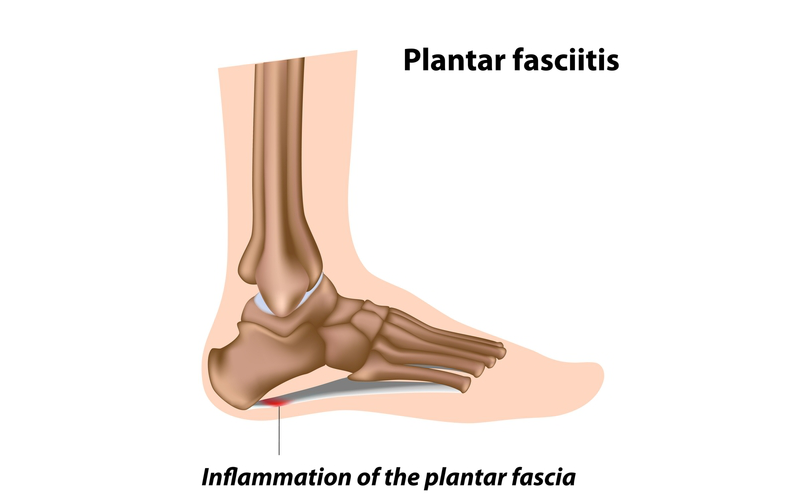Plantar Fasciitis | Symptoms & Causes
What are the symptoms of plantar fasciitis?
- a sharp pain in the heel
- pain upon first stepping out of bed, which usually subsides but may return later
- pain that gets worse when climbing stairs
- pain that gets worse when standing for long periods of time
- pulling of the tight plantar fascia on the heel bone during activity can result in the formation of a bone spur off the tip of the heel bone at the origin of the plantar fascia tissue. This bone spur itself is not the cause of pain, but rather the result of chronic irritation to the bone caused by the stretching of the tight tissue.
What causes plantar fasciitis?
The cause of plantar fasciitis remains unclear. However, there are several factors that can increase risk for plantar fasciitis.
- repetitive activities, such as prolonged standing or walking on hard or irregular surfaces
- running
- weight gain
- aging
- an injury, though this is rarely a cause
Plantar Fasciitis | Diagnosis & Treatments
How does a doctor know if my child has plantar fasciitis?
Your doctor will conduct a physical exam of your child as well as inquire into your child's medical history. The doctor may perform further tests, including observing how your child stands and walks.
In rare cases, your child's doctor may want an MRI or an x-ray. An x-ray won't help very much in viewing the ligaments, but may help find bone spurs.
How Boston Children’s Hospital treats plantar fasciitis
Surgery is rarely necessary to treat plantar fasciitis. To decrease your pain and symptoms, you may want to:
- Tape the heel and arch.
- Custom shoe inserts may be needed to support the arch and the heel.
- Increase the flexibility of the plantar fascia and calf muscles by doing stretching exercises. Tight calf muscles increase the stress on the plantar fascia and predispose you to plantar fasciitis.
- Stretch the calf muscle as well as the plantar fascia by standing on a step with only the front of the foot supported on the step and the heel free. Hold onto the rail for support and then slowly lower your heels toward the lower step. You should feel this in the calf muscle and in the plantar fascia. Hold the stretch for a count of 10, then slowly return the heel to the level of the rest of the foot. Repeat slowly 10 times.
- Massage the plantar fascia by rolling your foot over a round tube-like object with a diameter of three to four inches. A rolling pin works nicely for this stretch.
- Strengthen the muscles of the foot and ankle that support the arch. One way to do this is to scrunch up a hand towel with your toes or use your toes to pull a towel weighted with a food can across the floor.
- Warm up well before stretching. Cold tissues cannot stretch as effectively. After stretching, ice your heel for 20 to 30 minutes at the point of maximum tenderness to decrease any inflammation that may result from too vigorous a workout.
- Oral anti-inflammatory medications such as aspirin or ibuprofen can decrease the inflammation caused by the irritation of the plantar fascia and decrease your symptoms so that you can stretch and increase your flexibility. In some cases, your physician may recommend a prescription anti-inflammatory for you.
- Try a night splint. These devices, prescribed by your physician, keep the foot flexed at 90 degrees instead of the typical relaxed foot position of toes pointed down that occurs during sleep. Wearing a splint may lessen the pain of the first step in the morning.
- Massage the heel with a sports cream, which may lessen symptoms. A variety of therapeutic treatments can also be administered by a physical therapist.
How Boston Children's Hospital approaches plantar fasciitis
Plantar fasciitis is rarely serious enough to require surgery. At Boston Children's, doctors can help your child manage pain through exercises to stretch and strengthen the muscles in the foot, ankle, and leg.



